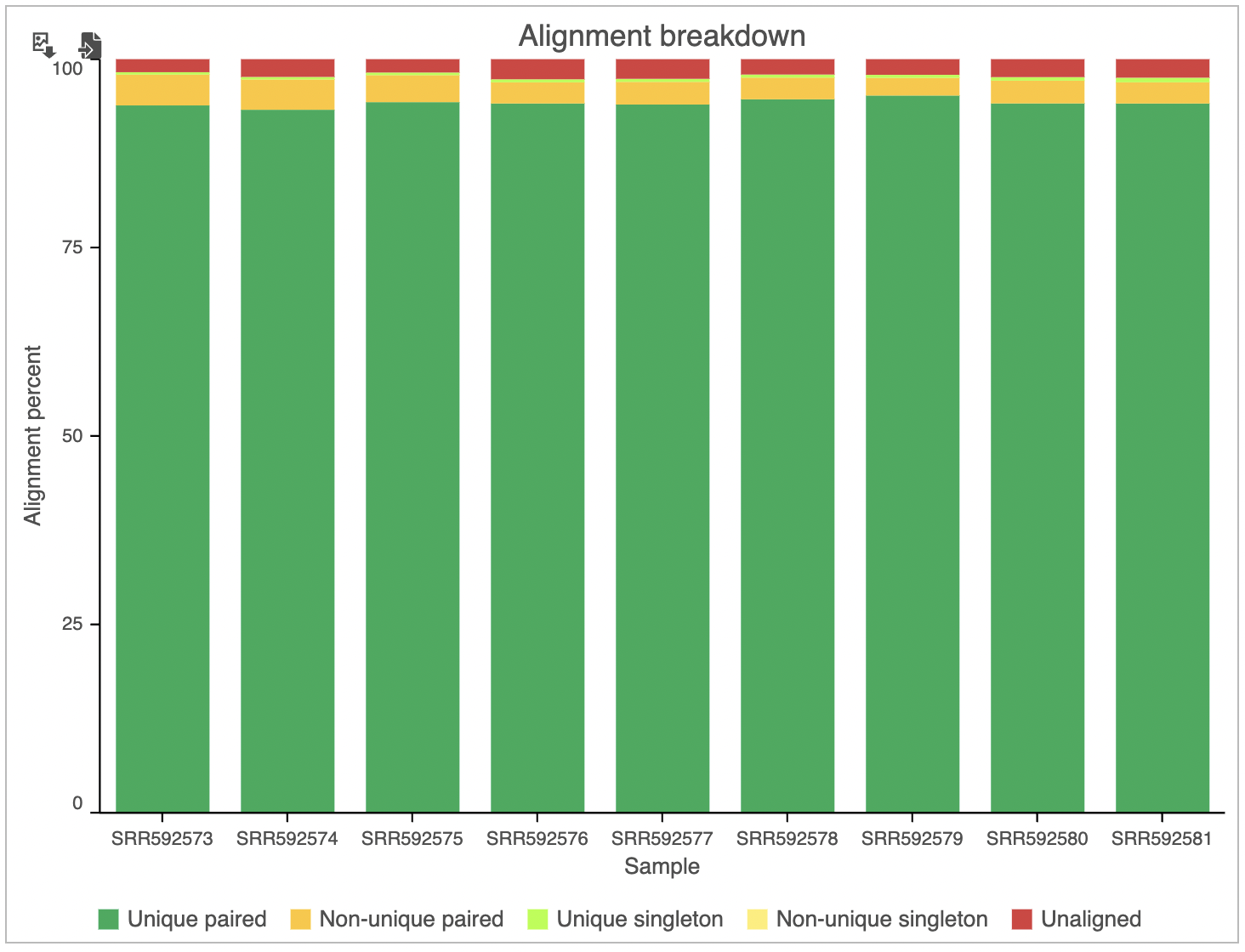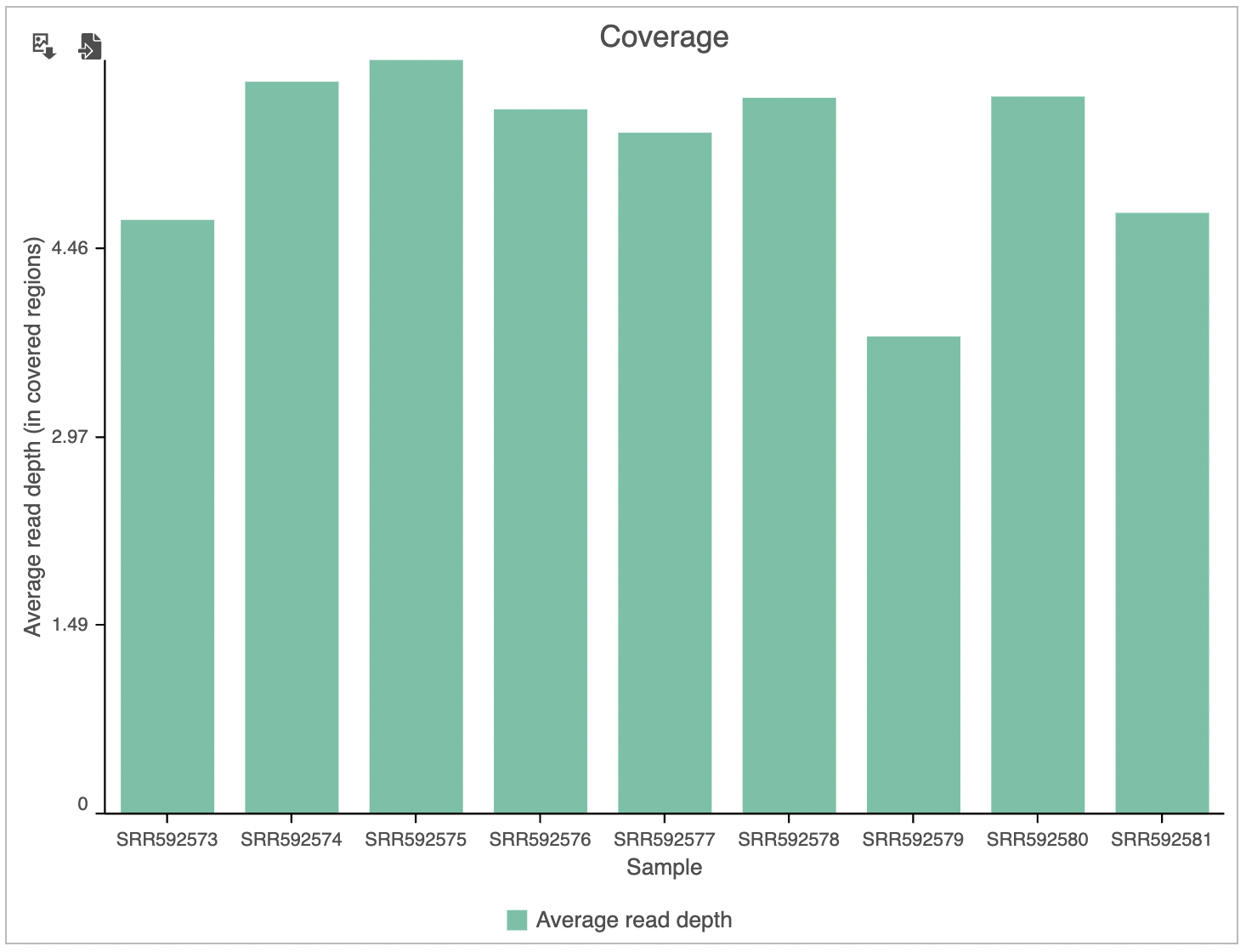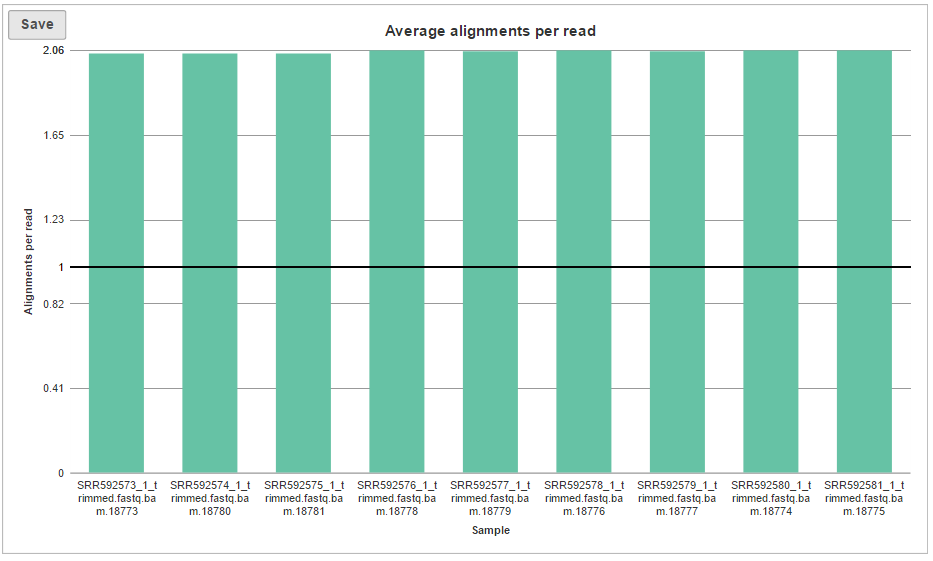Page History
...
The first two columns contain total number of reads (Total reads) and total number of alignments (Total alignments). Theoretically, for single-end chemistry, total number of reds reads equals total number of alignments. For double-end reads, theoretical result is to have twice as many alignments as reads (the term “read” refers to the fragment being sequenced, and since each fragment is sequenced from two directions, one can expect to get two alignments per fragment). When counting the actual number of alignments (Total alignments), however, reads that align more than once (multimappers) are also taken into account. Next, the Aligned column contains the fraction of all the reads that were aligned to the reference assembly.
...
In addition, the Post-alignment QA/QC report for single-end reads (Figure 1) contains the Unique column. This refers to the fraction of uniquely aligned reads.
| Numbered figure captions | ||||
|---|---|---|---|---|
| ||||
On the other hand, the Post-alignment QA/QC report for paired-end reads (Figure 2) contains these columns:
...
Note: for paired-end reads, if one end is aligned, the mate is not aligned, the alignment rate calculating will include the read as the numerator, also since the mate is not aligned, we will also include this read in the unaligned data node (if the generate unaligned reads data node option is selected) for 2nd stage alignment, this will generate discrepancy between total reads and "unaligned reads + total reads * alignment rate", because reads with only one mate aligned are counted twice .
| Numbered figure captions | ||||
|---|---|---|---|---|
| ||||
In addition to the summary table, several graphs are plotted to give a comparison across multiple samples in the project. Those graphs are Alignment breakdown, Coverage, Genomic Coverage, Average base quality per position, Average base quality score per read, and Average alignments per read. Two of those (Average base quality plots) have already been described.
...
| Numbered figure captions | ||||
|---|---|---|---|---|
| ||||
The Coverage plot (Figure 4) shows the Average read depth (in covered regions) for each sample using columns and can be red off the left-hand y-axis. On the same plot, the percentage of covered genome bases (Genome coverage) in each sample is represented by the black line and quantified by the right-hand y-axis.
Similarly, the Genomic coverage plot shows genome coverage in each sample, expressed as a fraction of the genome.
| Numbered figure captions | ||||
|---|---|---|---|---|
| ||||
The last graph is Average alignments per read (Figure 5) and shows the average number of alignments for each read, with samples as columns. For single-end data, the expected average alignments per read is one, while for paired-end data, the expected average alignments per read is two.
...
| Numbered figure captions | ||||
|---|---|---|---|---|
| ||||
| Additional assistance |
|---|
| Rate Macro | ||
|---|---|---|
|
...










